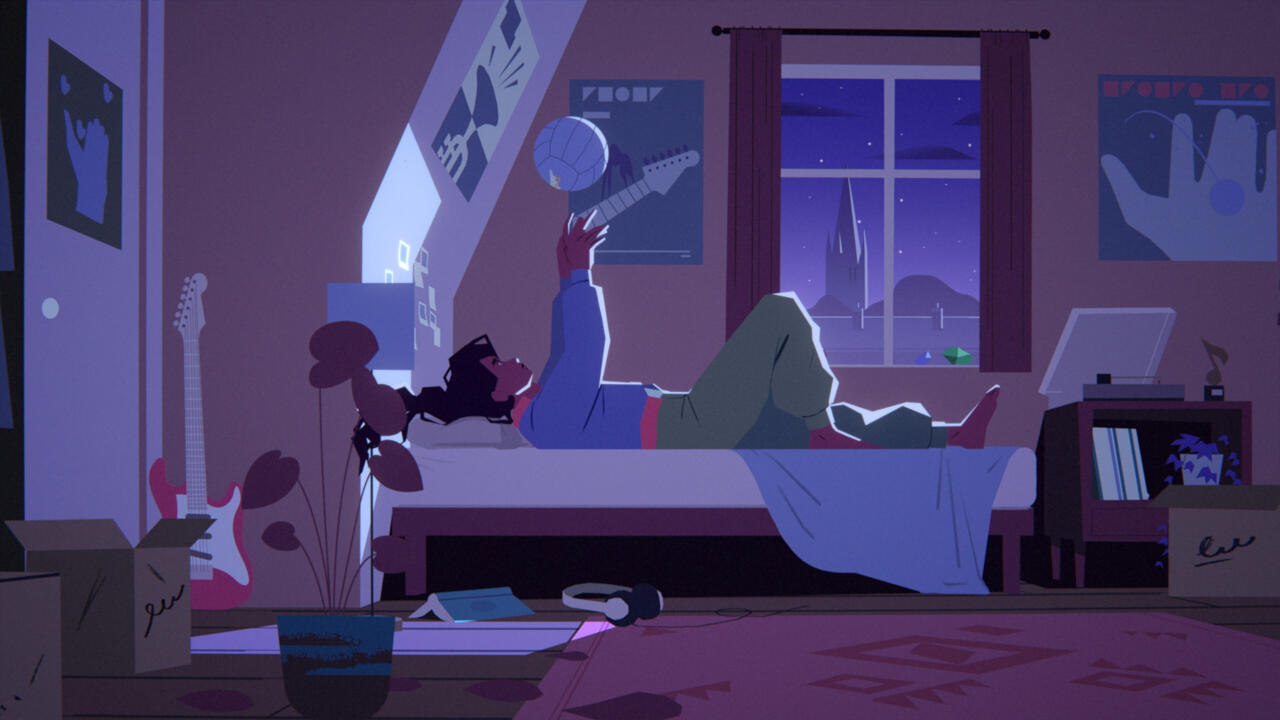In Desta: The Memories Between, you play as Desta, who takes on the unenviable, but relatable task of overthinking future conversations that you don't want to have. This anxiety manifests itself as a tactical dodgeball game in your dreams where you think through the worst possible conversation scenarios with old friends and family while visiting home for the first time in years. To turn that familiar human experience into a grid-based dodgeball game sounds strange on paper, but in practice, it works and delivers alongside it a solid tactics game that uses the mobile platform well.
Interpreting this rehearsal of future conversations as tactical dream dodgeball works well because it feels about as normal as the average anxiety dream. It only really makes sense while it's happening and only falls apart when you try and explain it later. In this way, Desta nails the feeling of a dream, which is difficult to do in any entertainment medium.
As a video game, it also works well as a fun tactics game. Every person in your life that you're dreading a confrontation with appears to you in your dreams (alongside some nobodies to serve as cannon fodder) on a layout of squares with randomized barriers. Old friends introduce themselves by berating you for the thing you're anxious about, manifesting your worst-case scenario. You take turns moving positions, picking up dodgeballs, and tossing the ball at them to inflict damage and whittle down their health while making sure you're in a position to not receive the same punishment. The core idea is familiar to anyone who has played a comparable strategy game, but the dodgeball adds an element of action and finesse that works well on a touchscreen.
Once in position, you pull back on your character to launch the dodgeball like a slingshot, making sure to release at the right moment for added speed. You can bounce the ball against enemies to hit other enemies, or bounce the ball into the hands of your teammates. You can even throw the ball against a wall to bounce it around a corner, or make sure it bounces back to you so the ball is in your hand for the next turn. Throwing the ball is a fun system that gives you lots of additional options in the arena, and when the bounces work in your favor it feels great.
Unfortunately, it can also hurt you in a way that doesn't always feel fair. Sometimes the physics don't quite work and the shot I thought was lined up perfectly bounced in an unexpected, detrimental way. With the touchscreen, I also occasionally accidentally threw a ball when I was just trying to rotate the camera, which was frustrating. Most moves can be undone without any penalty, which is great, but for understandable reasons, once you throw the ball, that turn is over.
Special abilities are unlocked as you play but are randomized each time you attempt a run. For example, one allows you to use all your action points to inflict more damage with a single throw, while another enables you to switch positions with an enemy to give yourself the advantage. This randomization is a good way to introduce you to abilities you may like but would not have otherwise tried, but it also locks you into some abilities that don't feel particularly useful. If you use an ability enough and level it up, you get to keep it across runs, which is great, but early in the game you're at the mercy of whatever you get and there were a few I just never found a great use for.

Desta is a roguelike which means you do have to restart a run when you wake up from a dream after getting hit by a dodgeball too many times. You level up and gain more health and movement spaces per turn as you go, as do the teammates you add to your team through the course of the game. Leveling you and your friends up, even with runs that don't go well, is great, and it encouraged me to be experimental when things weren't going my way.
The downside of tackling the game through a series of runs are the repeated conversations. The dialogue changes a little bit each time you encounter the character you've been dreading talking to again and again, but I can only hear my childhood friend yell at me for not reaching out to her so many times. I could even sense Desta getting annoyed as they had to go over the conversation with their high school teacher they never properly thanked for the support again for the fifth time. The dialogue is well-written, the characters are fully realized and well-performed, and I was excited to see Desta overcome her anxieties--that excitement just waned as she did it again and again with the same people.
Desta: The Memories Between is an interesting follow-up to developer Ustwo's breakout hit, Monument Valley. It swaps the abstract, yet emotional storytelling for something more overt, but still dreamlike. The overall setup, visual aesthetic, and soundtrack is great and the tactical combat is fun, but repeated conversations make some of the runs feel like a chore, and sometimes the dodgeball feels more like a loose cannon. Desta's journey, however, is a relatable one and helping them complete it--even in a dream--was a cathartic experience that made me want to text that friend I had not spoken with in years.




